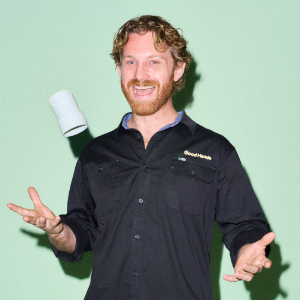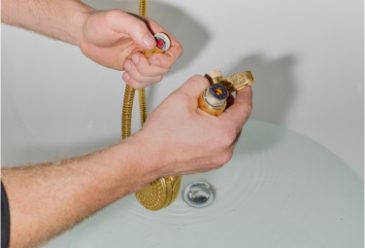If you’ve ever dealt with slow drains, foul odours, or the dreaded sewage backup, you’ll know how disruptive pipe problems can be. Traditionally, fixing damaged pipes meant digging up gardens, driveways, or even concrete slabs (a messy and costly exercise). Thankfully, there’s now a modern alternative that doesn’t involve tearing up half your property: pipe relining.
Pipe relining has quickly become the go-to solution for homeowners looking to fix damaged pipes with minimal fuss. It’s trenchless, durable, and faster than traditional replacement. But how does it actually work, and is it right for your home?
What Is Pipe Relining?
Pipe relining is a trenchless repair method that restores the inside of damaged or blocked pipes without the need to dig them up. Instead of replacing the old pipe entirely, a flexible liner coated with a special resin is inserted into the existing pipe. Once cured, this liner forms a tough, seamless “pipe within a pipe,” restoring functionality and preventing future damage.
This technique is especially common in:
- Sewer relining (repairing cracked or blocked sewer lines)
- Sewage pipe relining (addressing leaks and root intrusions in underground waste pipes)
- Stormwater pipe relining (fixing blocked or damaged drains that manage rainwater)
Because it avoids excavation, relining is particularly effective for pipes located under driveways, landscaped gardens, or concrete foundations. It delivers a strong, smooth new surface inside the pipe that allows waste and water to flow freely again — all without disturbing your home’s exterior.
When Should You Consider Pipe Relining?
Pipe relining isn’t just for catastrophic failures; it’s often recommended as a proactive solution to prevent recurring issues. If your plumbing is showing signs of stress or wear, relining may be the most efficient fix.
Common scenarios where relining is ideal include:
- Tree root intrusion – roots often seek out water sources, cracking into pipes and causing blockages.
- Cracks or fractures – small cracks allow leaks and can worsen over time.
- Corrosion – older metal pipes may rust and weaken, restricting flow.
- Recurring blockages – if your drains keep clogging despite cleaning, underlying pipe damage could be the culprit.
Signs your pipes may need relining
Keep an eye out for these red flags:
- Slow or sluggish drainage
- Frequent backups or overflows
- Gurgling noises from drains or toilets
- Persistent sewer smells around the property
If you’re noticing more than one of these issues, it’s worth booking a CCTV inspection to check whether relining is suitable.
How Does the Pipe Relining Process Work?
One of the reasons pipe relining is so effective is that the process is both systematic and precise. Here’s a breakdown of how a professional plumber typically relines sewer pipes or stormwater drains:
Step 1: Inspection and cleaning
First, a CCTV drain camera is used to inspect the inside of the pipe and assess the damage. This gives the plumber a clear view of cracks, root intrusions, or blockages. Once the problem is identified, the pipe is thoroughly cleaned — usually with high-pressure jet blasting or mechanical cutting tools — to remove debris and prepare the surface.
Step 2: Measuring and preparing the liner
Next, the plumber measures the pipe’s diameter and length. A custom liner is then cut to size and impregnated with resin. This provides a snug fit that can create a smooth, watertight seal once inside the pipe.
Step 3: Inserting and curing the liner
The resin-coated liner is inserted into the damaged pipe using an inversion process, essentially turning the liner inside out as it’s pushed into position. Once in place, the liner is inflated, pressing it firmly against the pipe walls. The resin is then cured (hardened) using hot water, steam, or UV light, depending on the method. This curing process transforms the liner into a tough, permanent new pipe.
Step 4: Final testing and quality check
After curing, the liner is deflated and removed, leaving behind a smooth, durable pipe-within-a-pipe. A second CCTV inspection is performed to make sure the repair has been successful and that water and waste can flow freely again.
The result? A brand-new internal pipe structure without ever having to dig up your yard.
Benefits of Pipe Relining
Pipe relining comes with a host of advantages that make it a preferred choice for homeowners.
Trenchless and non-invasive
Forget about excavators tearing up your lawn. Relining is trenchless, meaning no large-scale digging is needed. This saves your landscaping, driveway, and flooring from damage.
Long-lasting and durable
A properly relined pipe can last anywhere from 20 to 50 years, depending on materials and installation quality. The resin creates a strong, seamless surface that resists corrosion, leaks, and tree root intrusion.
Faster than full replacement
Traditional replacement can take days or even weeks, depending on pipe location. By contrast, pipe relining is often completed within a single day, minimising disruption to your home.
Cost-effective in the long run
While the upfront cost can be comparable to excavation, relining eliminates the expense of repairing landscaping, driveways, or slabs. The durability also means fewer repairs down the line, saving money in the long term.
FAQs About Pipe Relining
How long will pipe relining last?
Pipe relining typically lasts up to 50 years, provided it’s installed correctly and maintained well. Longevity can vary based on the resin used and the condition of the original pipe.
Does pipe relining come with a guarantee?
Yes. Most professional providers offer warranties ranging from 10 to 25 years. Always ask for the warranty terms in writing so you understand what’s covered.
What types of pipes can be relined?
Pipe relining works with a variety of materials, including PVC, clay, cast iron, and concrete pipes. It’s commonly used in both sewer and stormwater systems.
Can collapsed or broken pipes still be relined?
It depends. Partial collapses may still be suitable for relining, but if a pipe is fully collapsed with no space for the liner, excavation may be necessary. A professional assessment will confirm suitability.
Is pipe relining safe for the surrounding area?
Yes. Once cured, the resin forms a smooth, seamless pipe that’s safe, non-toxic, and environmentally friendly. It restores flow without harming soil, plants, or groundwater.



